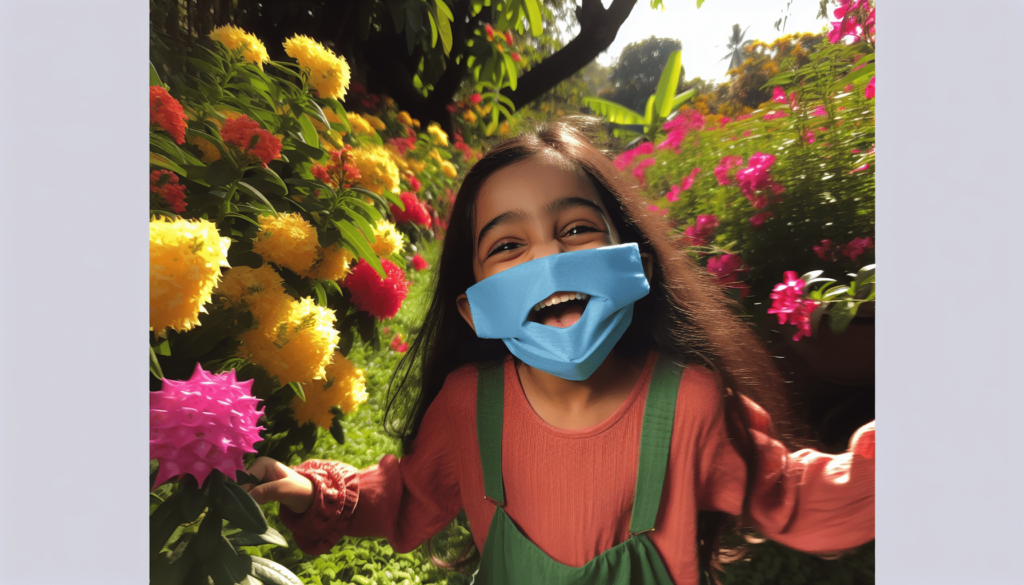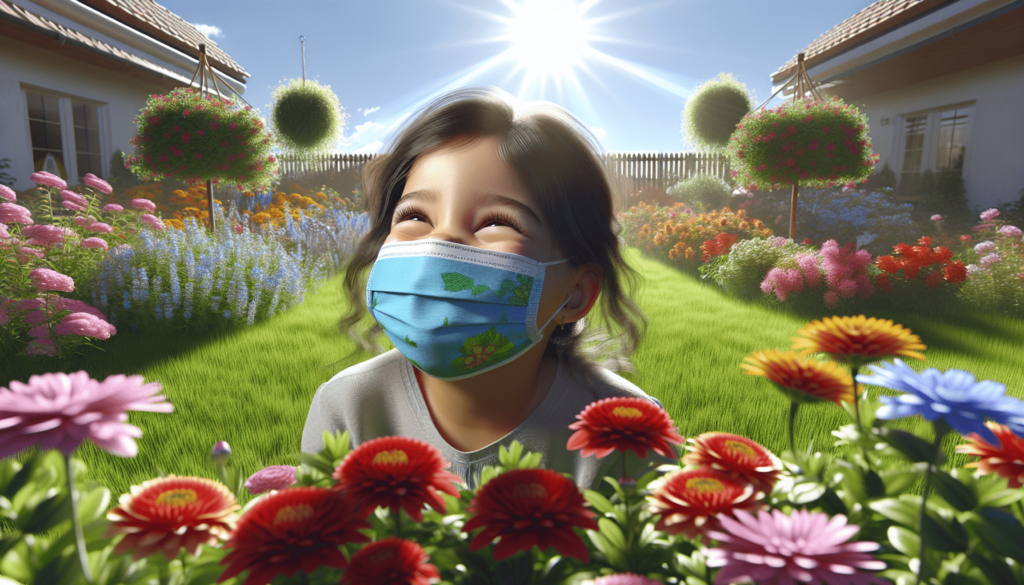Ensuring your little ones stay happy and healthy is every parent’s top priority, especially when it comes to avoiding allergy reactions. In “Top Ways To Prevent Allergy Reactions In Children,” you’ll discover practical tips and effective strategies that can easily be incorporated into your daily routine. From keeping your home allergen-free to making informed dietary choices, this guide offers you a comprehensive approach to safeguarding your children’s well-being, allowing them to enjoy life to the fullest without unnecessary discomfort. Have you ever wondered how to keep your child safe from allergy reactions? As a parent, you know how challenging it can be when your child suffers from allergies. Whether it’s seasonal, food, or skin allergies, they can take a toll on your child’s health and overall well-being. But worry not, there are numerous strategies you can adopt to minimize and even prevent these reactions.
Understanding Allergies in Children
Before diving into prevention tips, it’s essential to understand what allergies are and how they affect children. Allergies occur when the immune system mistakenly identifies a harmless substance as a threat. This leads to the release of chemicals like histamines, causing symptoms ranging from mild itching to severe anaphylaxis.
Common Allergy Triggers
Different children have different allergy triggers. The most common ones are:
- Food Allergens: Such as peanuts, tree nuts, milk, eggs, soy, wheat, fish, and shellfish.
- Environmental Allergens: Including pollen, dust mites, mold, and pet dander.
- Insect Stings: Reactions to bee stings or bites from other insects.
- Medications: Some children might be allergic to antibiotics or over-the-counter drugs.
- Skin Contacts: Reactions to plants like poison ivy or certain chemicals in soaps and lotions.
Understanding what triggers your child’s allergies is the first step in preventing them.
How To Prevent Food Allergies
Food allergies can be particularly stressful as they often lead to severe reactions. However, with careful planning and vigilance, you can help reduce the risk of exposure.
Read Labels Diligently
Always read food labels before offering anything to your child. Manufacturers are required to list common allergens on packaging, so make it a habit to scrutinize these labels.
Avoid Cross-Contamination
Cross-contamination can occur when allergens unintentionally make their way into foods that are otherwise safe. Use separate utensils and cutting boards for allergenic and non-allergenic foods.
Educate Your Child
Teach your child about their food allergies and what they should avoid. Make sure they understand not to share food with friends and always to ask an adult if they’re unsure about a particular food item.
Inform Others
Make sure teachers, caregivers, and other parents know about your child’s allergies. Provide them with detailed instructions on what to do if an allergic reaction occurs.
Prepare For Emergencies
Keep an emergency kit with antihistamines or an epinephrine auto-injector (EpiPen). Make sure everyone knows how to use it properly.

How To Prevent Environmental Allergies
Environmental allergies like pollen, dust mites, and mold can be harder to control, but there are effective ways to minimize your child’s exposure.
Keep Windows Closed
During high pollen seasons, keep windows and doors closed to reduce the amount of pollen entering your home.
Use Air Purifiers
Air purifiers with HEPA filters can effectively remove allergens like dust mites and pet dander from the air. Place them in your child’s bedroom for the best results.
Clean Regularly
A clean home is a safer home for an allergy-prone child. Vacuum frequently, using a vacuum cleaner equipped with a HEPA filter. Don’t forget to wash bedding, stuffed animals, and curtains regularly in hot water.
Control Humidity
Mold thrives in damp environments, so keep an eye on the humidity levels in your home. Using a dehumidifier in damp areas like basements can help prevent mold growth.
How To Prevent Reactions to Insect Stings
Insect stings can sometimes lead to severe allergic reactions. Here’s how to minimize the risk.
Choose Outdoor Play Areas Carefully
Encourage your child to play in areas that are less likely to harbor insects. Avoid places with standing water, flowering plants, or uncovered food.
Dress Appropriately
Dress your child in light-colored clothing to avoid attracting insects. Long sleeves and pants provide an additional layer of protection.
Use Insect Repellents
Apply insect repellent to your child’s skin and clothing, but make sure to choose a product that is safe for children.
Educate About Insects
Teach your child to stay calm around insects. Swatting or rapidly moving can provoke them. Also, show them how to identify and avoid nests or hives.

Managing Medication Allergies
Sometimes, medications themselves can cause allergic reactions, and managing this can be complex. Here’s what you can do.
Update Medical Records
Always inform your child’s doctor about any known allergies to medications. Keep a comprehensive record and update it as needed.
Avoid The Culprit
If your child has had a previous reaction to a medication, avoid it entirely. Ask the doctor for alternative medications that do not trigger allergic reactions.
Inform Care Providers
Make sure that any caregivers, school nurses, or babysitters are aware of your child’s medication allergies and know how to handle an emergency situation.
Preventing Skin Contact Reactions
Skin reactions are typically caused by direct contact with allergens, and they can be uncomfortable for your child.
Use Hypoallergenic Products
Choose hypoallergenic soaps, shampoos, and lotions. Also, avoid products with strong fragrances or dyes.
Educate About Plants
Teach your child to recognize and avoid plants like poison ivy, oak, or sumac. A simple “leaves of three, let it be” can be a good rule of thumb.
Launder With Care
Use mild, fragrance-free detergents for your child’s clothing, bedding, and towels. Rinse clothes well to remove any detergent residue.
Monitoring and Managing Symptoms
Even with all the precautions in the world, there’s always a chance your child might still encounter allergens. Monitoring and managing symptoms can make a huge difference.
Keep a Symptom Diary
Track your child’s symptoms to identify potential triggers. This can be especially helpful when discussing your child’s condition with their doctor.
Regular Check-Ups
Regular visits to an allergist or pediatrician can help you stay on top of your child’s condition. Adjust treatment plans as needed to ensure optimal care.
Medication Management
Know what medications your child needs to manage their symptoms and how to administer them safely. Always have medications on hand and make sure they are not expired.
Emergency Plan
Having a well-thought-out emergency plan is crucial. Make sure everyone involved in your child’s care knows the signs of a severe reaction and what steps to take immediately.
Table for Quick Reference: Allergy Triggers and Prevention Tips
| Allergy Trigger | Prevention Tips |
|---|---|
| Food Allergens | Read labels, avoid cross-contamination, educate your child, inform others, prepare for emergencies |
| Environmental Allergens | Keep windows closed, use air purifiers, clean regularly, control humidity |
| Insect Stings | Choose play areas carefully, dress appropriately, use insect repellents, educate about insects |
| Medication Allergies | Update medical records, avoid known allergens, inform care providers |
| Skin Contact Allergens | Use hypoallergenic products, educate about plants, launder with care |
Building a Support Network
One of the best ways to handle your child’s allergies is to build a reliable support network.
Inform Your Inner Circle
Ensure that family members, close friends, teachers, and babysitters are well-informed about your child’s allergies, symptoms, and treatments.
Join Support Groups
Online forums and local support groups can offer invaluable advice and emotional support. You’ll find that you’re not alone in this and can learn from the experiences of others.
Educate Your Child’s Friends
If your child is old enough, encourage open conversations between them and their friends about their allergies. This can make social situations less stressful and more inclusive.
Lifestyle and Dietary Adjustments
Adjusting your child’s lifestyle and diet can be beneficial in minimizing allergy risks.
Nutrient-Rich Diet
A well-balanced diet rich in fruits, vegetables, and whole grains can help boost your child’s immune system.
Limit Exposure to Fast Food
Some studies suggest that fast food may exacerbate allergy symptoms. Limit the intake of fast food and opt for home-cooked meals instead.
Physical Activity
Regular exercise can improve overall health and fortify the immune system. Just ensure that your child avoids outdoor activities during high-pollen days if they have seasonal allergies.
Conclusion
Preventing allergy reactions in children may feel overwhelming, but with the right strategies and support, it’s highly manageable. Always stay informed about your child’s specific triggers, take possible precautionary measures, and work closely with healthcare providers. By doing so, you can give your child the safest and healthiest environment possible.
Remember, you’re not alone in this journey, and with the right knowledge and tools, you can significantly reduce the impact of allergies on your child’s life. Happy parenting!
